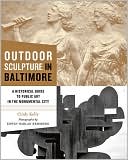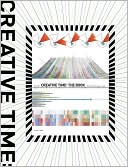The question "what is art" can be quite simple or complex. When we think about art in cities, things get even murkier. Who is art for? Is it statues of long-gone military heroes? How does art enhance the public realm? Author and urbanologist Max Grinnell will talk about the role of public art in American cities, via illustrative materials from his travels at the Lawrence Public Library (February 20, 7 pm).
Mr. Grinnell has also been kind enough to put together a suggested reading list to help guide our exploration of urban aesthetics:
Mr. Grinnell has also been kind enough to put together a suggested reading list to help guide our exploration of urban aesthetics:
ed. by Steven Conn and Max Page
This anthology of some of the nation’s best-loved writers, including Mark Twain, W. E. B. Du Bois, Henry James, Edith Wharton, Lewis Mumford, E. B. White, and John McPhee, contemplates the American way of building, and demonstrates how central the built environment has been to our definition of what it is to be American.
by Mary L. Gray
Anyone who’s seen the gorgeous lunettes in the Auditorium Theater or the South Side's Wall of Respect knows that Chicago has a rich tradition of mural painting. From post offices to libraries, fieldhouses to banks, and private clubs to street corners, Mary Gray chronicles the amazing works of artists who have sought to make public declarations in this most social of art forms.
by Michael Kammen
306.4709 KAMMEN M
 In this lively narrative, award-winning author Michael Kammen presents an analysis of cutting-edge art and artists and their ability to both delight and provoke us. From Thomas Eakins’s 1875 masterpiece The Gross Clinic (considered “too big, bold, and gory” when first exhibited) to the bitter disputes about Maya Lin’s Vietnam War Memorial, this is an eye-opening account of American art and the battles and controversies that it has ignited.
In this lively narrative, award-winning author Michael Kammen presents an analysis of cutting-edge art and artists and their ability to both delight and provoke us. From Thomas Eakins’s 1875 masterpiece The Gross Clinic (considered “too big, bold, and gory” when first exhibited) to the bitter disputes about Maya Lin’s Vietnam War Memorial, this is an eye-opening account of American art and the battles and controversies that it has ignited.
by Jerold S. Kayden
This “juicy little time bomb of a book” examines New York City's 39-year mixed experience with the production of more than 500 plazas, parks, and atriums located on private property yet by law accessible to and usable by the public. Through words, photographs, scaled site plans and maps, Harvard University professor Jerold S. Kayden shows individuals where to discover New York City's hidden public spaces.
by Cindy Kelly
Before New York, Philadelphia, and even Washington D.C., the most impressive sculptural monuments in America were under construction in Baltimore. As Cindy Kelly talks about how more than 250 sculptures were commissioned, constructed, and dedicated, the rich cultural, economic, and social history of the city unfolds, inviting us to see “the Monumental City” in a wholly fresh perspective.
by Anne Pasternak and Lucy Lippard
on order
For more than 30 years, Creative Time has been an avatar of public art in New York City, working to engage art and the environment, artists and the public.Creative Time: The Book shows how a single organization made it possible for thousands of artists to present awe-inspiring works that engage, taunt, seduce, enliven, and transform a city.
759.06 WOLFE T
“America's nerviest journalist” trains his satirical eye on Modern Art in this work. Wolfe addresses the scope of Modern Art from its founding days as Abstract Expressionism through its transformations to Pop, Op, Minimal, and Conceptual. This is Tom Wolfe “at his most clever, amusing, and irreverent.”
 Max Grinnell is a writer, traveler, and explorer who has published extensively on urban environments, most often those in Chicago and Boston. As part of his professional experience, Max has worked with the Michael Sorkin Design Studio, the Newberry Library, Frommer’s Publications, AA Publishing, the Chicago Tribune, the city of Chicago’s Cultural Affairs Department, the Worldwide University Network, the University of Wisconsin, the University of Illinois at Chicago, and the University of Chicago. He has designed and taught courses on urban studies, community development, geography, planning and sociology at the University of Wisconsin, Boston University, the Massachusetts College of Art and Design and the University of Chicago. For more information on Max Grinnell, search his site: www.theurbanologist.com.
Max Grinnell is a writer, traveler, and explorer who has published extensively on urban environments, most often those in Chicago and Boston. As part of his professional experience, Max has worked with the Michael Sorkin Design Studio, the Newberry Library, Frommer’s Publications, AA Publishing, the Chicago Tribune, the city of Chicago’s Cultural Affairs Department, the Worldwide University Network, the University of Wisconsin, the University of Illinois at Chicago, and the University of Chicago. He has designed and taught courses on urban studies, community development, geography, planning and sociology at the University of Wisconsin, Boston University, the Massachusetts College of Art and Design and the University of Chicago. For more information on Max Grinnell, search his site: www.theurbanologist.com. 









